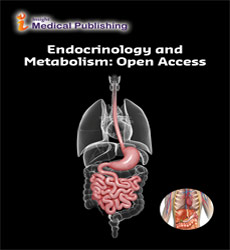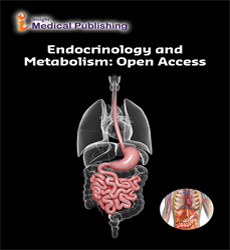A New Gateway to explore Knowledge in the Field of Endocrinology
Leonardo Roever*
Department of Clinical Research, Federal University of Uberlândia, Brazil
- *Corresponding Author:
- Leonardo Roever
Department of Clinical Research
Federal University of Uberlândia
Brazil
E-mail: leonardoroever@gmail.com
Received Date: May 07, 2021; Accepted Date: May 21, 2021; Published Date: May 28, 2021
Citation: Roever L (2021) A New Gateway to explore Knowledge in the Field of Endocrinology. Endocrinol Metab Vol.5 No.3:e165.
About the Study
Endocrinology and Metabolism: Open Access is a peer reviewed journal which focuses on the publication of current research and developments on the endocrine glands and its secretions with their coordination with metabolism and reproduction.
Endocrinology and Metabolism: Open Access Journal is using Editorial Tracking System to maintain quality and transparency to the author in the peer-review process. Review processing is going to be performed by the editorial board members of the Journal Endocrinology and Metabolism: Open Access or by Reviewers (outside experts within the field). Two independent reviewer’s approval (Minimum reviewer’s approval) followed by editor approval is obligatory for acceptance of any manuscript excluding an editorial.
In 2021, we are expanding the scope of the journal. A major aspect of the stated mission of this journal is to constructively erode silos of clinical and research activity. Specifically, it's been our aim to facilitate knowledge transfer between endocrinology and cardiovascular medicine. A second-level consideration concerns the excellence between the closely related disciplines of endocrinology, diabetes and metabolism. These specialties, although often intersecting within the clinic, remain segregated to some extent. This convention is reflected in dedicated scientific and professional care societies, separate major scientific conferences for every specialty, and therefore the number of medical journals that are dedicated to either endocrinology or diabetes instead of to both subjects together. Beyond the main target on hyperglycemia, diabetes is intimately related to other derangements of other aspect of intermediary metabolism; for instance , defects in aspects of lipid metabolism are usually encountered in the setting of even minor degrees of glucose intolerance.
We wish to encourage submissions of all aspects of endocrinology, diabetes, and metabolism that are relevant to vascular disease. This journal’s international editorial board is being reconstituted to reflect this expanded perspective.
Developments in genetics, metabolomics, and lipidomics are helping to dissect the associations between metabolic and vascular disorders with ever greater precision.
Moreover, there's increasing recognition of the importance of combined metabolic-vascular actions of novel pharmacotherapies. The notable reductions in heart failure in high-risk patients with type 2 diabetes treated with sodiumglucose transporter-2 (SGLT2) inhibitors, which weren't predicted, points to effects, possibly hemodynamic, beyond reductions in hyperglycemia. The potential for pharmacological interventions to influence multiple aspects of metabolism within the context of cardiovascular risk reduction is additionally of interest. It is only recently that statins are demonstrated to confer alittle increase in risk of new-onset diabetes. This realization provided pause for considered a drug class that had hitherto been considered having only positive metabolic effects. The diabetogenic effects of statins emphasize the potential for adverse consequences, that is, hyperglycemia, arising from a pharmacological intervention that targets another aspect of metabolism, i.e. low-density lipoproteincholesterol. Proprotein convertase subtilisin kexin 9 (PCSK9) inhibitors provide even greater reductions in low-density lipoprotein-cholesterol levels. To date, however, no signal of elevated diabetes risk has been observed with these potent new agents.
In addition to metabolic disease, this journal’s interest within the relevance of pituitary, adrenal, and reproductive endocrinology to vascular physiology and disease remains undiminished.
Journal is now accepting manuscripts for volume 5 for year 2021. We are planning to publish minimum of 5 and maximum of 20 articles per issue every month. Submissions in our journal are given high priority during the process.

Open Access Journals
- Aquaculture & Veterinary Science
- Chemistry & Chemical Sciences
- Clinical Sciences
- Engineering
- General Science
- Genetics & Molecular Biology
- Health Care & Nursing
- Immunology & Microbiology
- Materials Science
- Mathematics & Physics
- Medical Sciences
- Neurology & Psychiatry
- Oncology & Cancer Science
- Pharmaceutical Sciences
